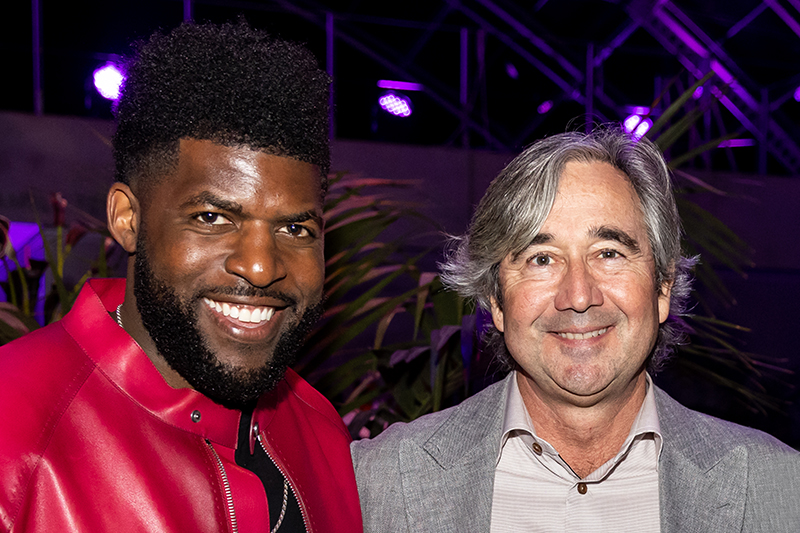It’s a common scenario in the world of startups: An entrepreneur has a great idea for a business, but lacks technical or revenue skills to execute. So they quickly go about finding co-founders and plotting shared leadership to make the vision a reality.
Meanwhile, over in corporate America, one CEO is expected to lead their workplace—and all the challenges of this moment—with agility, creativity, dependability, vulnerability. One person.
It’s lonely at the top, you often hear from business leaders. It probably shouldn’t be.
The advantage of shared leadership
Having more than one person at the helm means more opportunity for a company to infuse its top ranks with diversity in all aspects, including age, race, gender, and skillset, as well as more experience with management, communications, and digital prowess. Research backs up the value of adding more names to the top of the org chart: A recent survey from Harvard Business Review examined the performance of 87 public companies whose leaders identified as co-CEOs and found “those firms tended to produce more value for shareholders than their peers did,” with an average annual shareholder return of 9.5%, compared to the overall average of 6.9%.
“Leadership follows a curious mathematical rule,” explains leadership consultant Céline Schillinger in her just-published book Dare to Un-Lead: The Art of Relational Leadership in a Fragmented World: “The more you share it, the bigger it grows.”
I asked Schillinger, an entrepreneur knighted by the French government for her work on workplace change, why corporate America balks at shared leadership and why startups seem better at it. She pointed to three key areas:
- Size: “A small organization … is forced to use agile, rapid decision-making methods which imply that leadership is distributed and not concentrated in one place,” she says. “An organization without history can afford to be innovative in the way it operates.”
- Intention to disrupt: “Today’s entrepreneurs sometimes see corporate America as an anti-model, especially in its practice of cascading leadership, a source of bureaucracy and bottlenecks at all levels,” she says. They don’t consider leadership “an individual badge of honor.”
- Priorities: Startups, Schillinger says, focus “energy on growth rather than on control. Control is a source of power concentration. In corporate America, this concentration of power is normally called ‘leadership.’”
Notably, though, none of these features are definitionally limited to smaller, newer organizations. With effort and care, it’s possible for leaders of older, more established companies to adopt the mindset necessary to effectively share their roles.
To get a better sense of the advantages and challenges of having two people in charge, I asked leaders whose ability to collaborate is built directly into their product: podcast co-hosts.
What shared leadership looks like in practice
The Mash-Up Americans is a media company, boutique creative studio, and podcast with a focus on reaching diverse audiences, founded and run by Amy S. Choi and Rebecca Lehrer. Nine years in, both describe their experience organically sharing leadership (and the mic).
“We loosely structured our company into business stuff under Rebecca and editorial stuff under me, as well as leaning into what our strengths and interests were,” says Choi. “Our strategy and creative leadership is the two of us putting our minds together and being patient and honoring each others’ instincts. I absolutely do not think this kind of loose structure and slow evolution works for everyone, and it would not work if we didn’t trust each other completely.”
This idea of trust is key, agrees Lehrer. “Something important to re-emphasize about our partnership is that we are on the same team,” she says. “We want each other to thrive. We respect each other’s skills.”
The sentiment was echoed by another successful pair of podcast hosts: Jimmy Etheredge, CEO of Accenture North America, and former NFL linebacker Emmanuel Acho, who run Accenture’s Change Conversations podcast.
Both Etheredge and Acho describe a set of shared values driving their decision to work together. “We have to be able to disagree, but there are some things we can’t disagree on,” Acho told Etheredge early on.
Dwelling on disagreement places an undue emphasis on winning, says Etheredge. “We aren’t in this to upstage each other. I think of it this way: We don’t compete or compare, we share.”

Shared leadership can be a tool for diversity
Also host of Uncomfortable Conversations with a Black Man, Acho says collaborative leadership has played a meta role on the podcast, allowing the show to highlight a broader range of points of view and more effectively cover subjects such as race and mental health. “We had to have real conversations about topics that may have been seen as taboo in the past, with the objective to be positive change for a more inclusive workplace,” says Acho, the Dallas-born son of Nigerian immigrants.
“Race, power, representation and DEI don’t just come into play, they are the play,” says Etheredge. Through co-hosting, he’s learned to read every room and consider whose perspectives are present, powerful, or absent. “How many conversations did you hear in corporate America a few years ago about things like code switching and privilege?” he says. His shared work with Acho is “an intersection—one that brings together what we don’t share and what we do have in common.”
What makes shared leadership successful
Even co-leaders who have crafted thoughtful policies on how to disagree will inevitably face conflict at some point. “Never underestimate the egos,” says one serial entrepreneur who spoke on the condition of anonymity; he co-founded four companies and eventually split from all four co-founders. “If there’s an overlap of decision-making and conflict, there needs to be some way to break the tie. It’s easy for that to create an unease in the person that is ultimately the number two.”
Choi offers some parameters about what happens when it feels impossible to reconcile two divergent points of view: “Often it ends up going the direction of who feels stronger about something, or what becomes someone’s pet obsession,” she says. “We have both been clear that we’re a united front on the decision, even if we’ve had robust discussion about it beforehand.”
Importantly, she says, “it probably helps that if there is a disagreement, then usually the person who owns the choice also usually owns most of the work that comes from it.” Ultimately, as much as they aim to be a cohesive unit, co-leaders are still two individuals—for worse, sometimes, but more often for the better.
